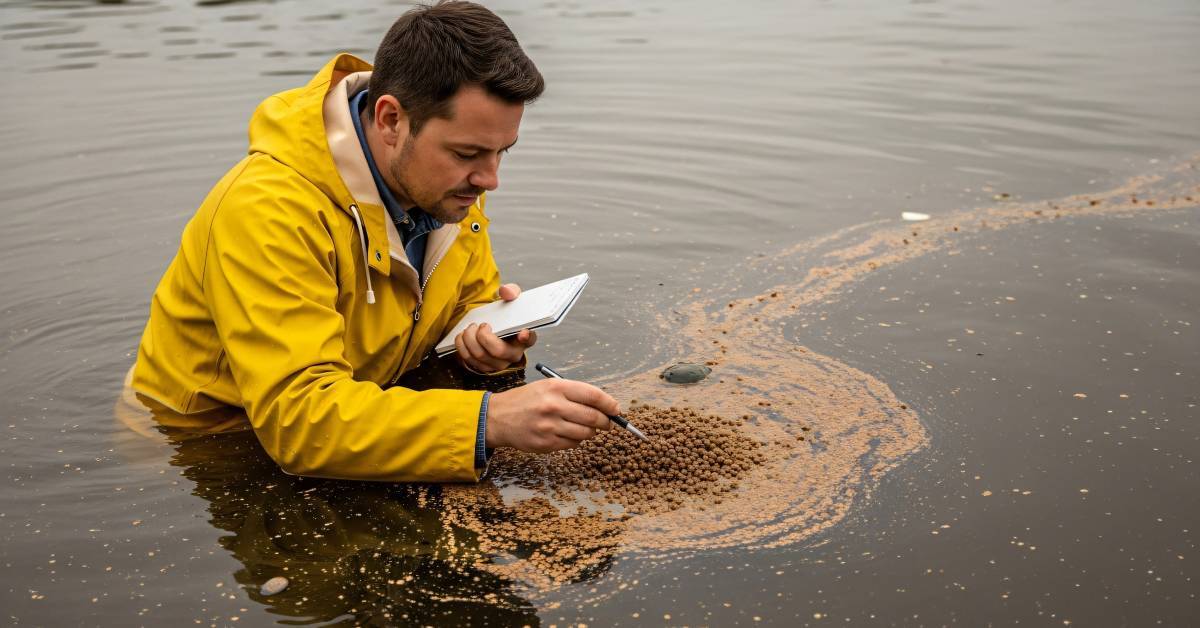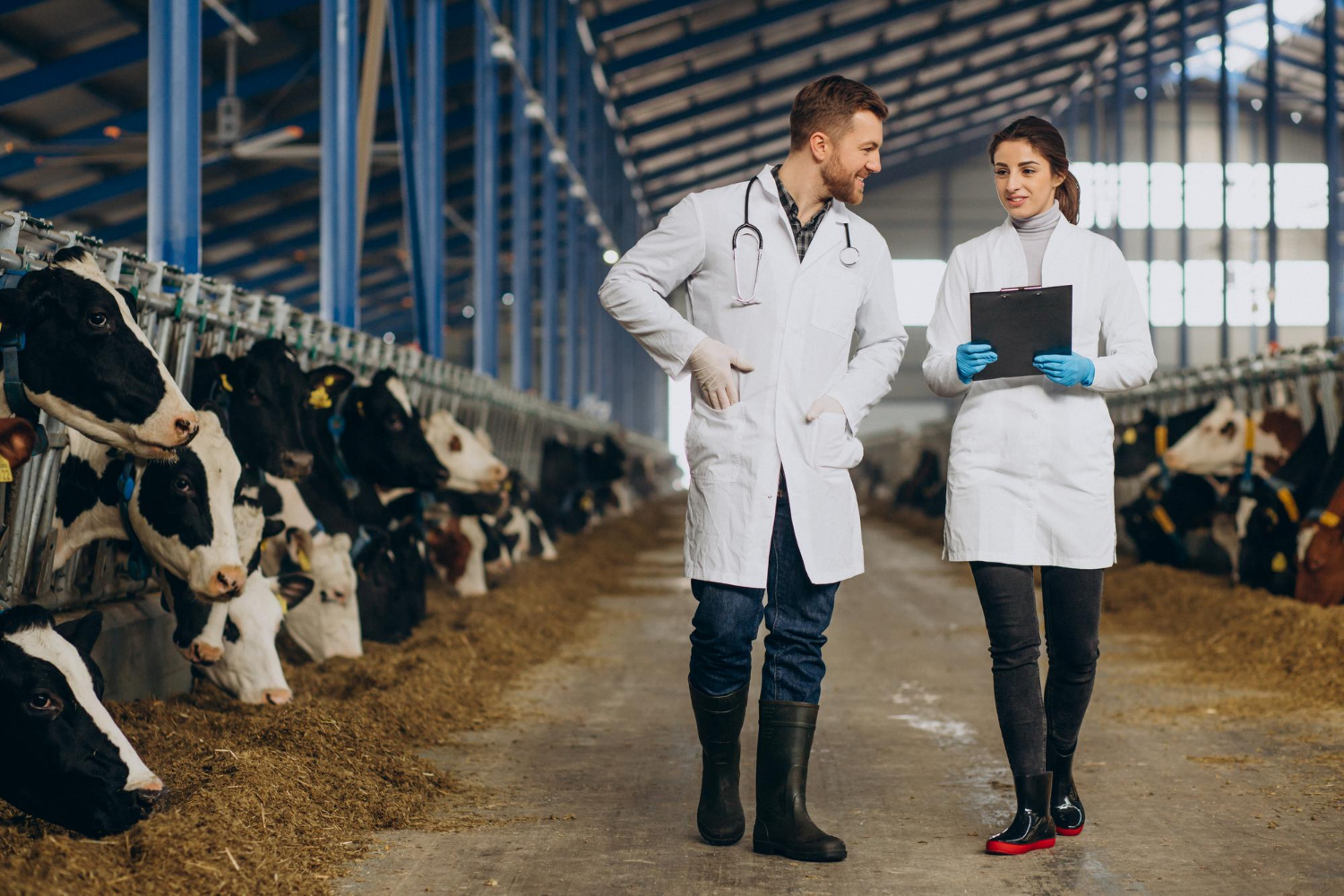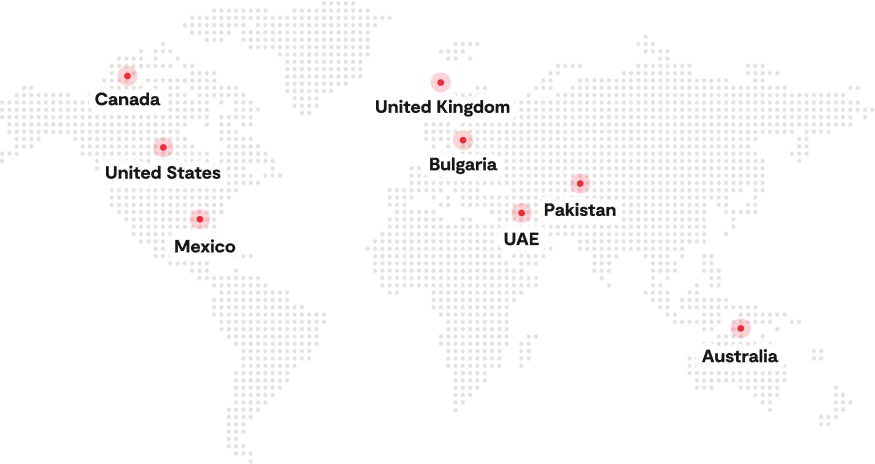Aquaculture has emerged as one of the fastest-growing sectors in global food production. It plays a critical role in meeting the rising demand for seafood as wild fish stocks decline. Today, farmed fish and shellfish account for nearly half of the seafood consumed worldwide, making aquaculture a cornerstone of modern food security. According to the FRDC, aquaculture now supplies more than 50 percent of the aquatic animal products consumed worldwide, helping meet growing demand as wild stocks decline.
Its rapid growth comes with undeniable benefits such as consistent supply, lower pressure on wild fisheries, and economic opportunities for coastal communities. However, the expansion of modern aquaculture is not without consequences. Intensive farming systems, chemical use, and habitat alteration have led to growing concerns over sustainability.
In this blog, we explore the negative impacts of aquaculture and the environmental risks that come with its industrial scale. From water pollution to habitat destruction, these challenges demand urgent attention. We will also discuss potential solutions that can reduce harm and make aquaculture more sustainable for the future.
What Is Modern Aquaculture?
Modern aquaculture refers to the controlled farming of aquatic species such as fish, shellfish, and seaweed in marine and freshwater environments. Unlike traditional capture fishing, aquaculture uses structured systems to raise and harvest aquatic organisms for food and other products.
The aquaculture industry operates through different methods, each suited to specific species and environments. Open-net pens are commonly used in coastal waters for species like salmon, where fish are grown in large floating cages. Pond farming remains prevalent in inland areas for species such as tilapia and carp. More advanced setups, like recirculating aquaculture systems (RAS), allow farming in closed, land-based facilities. These systems recycle water through filters, making them more sustainable and less dependent on natural water bodies.
To contrast, traditional fisheries rely on catching wild fish from oceans, lakes, or rivers, with limited control over species population or sustainability. In comparison, modern aquaculture is structured, measurable, and increasingly tech-driven. As of recent data, around 98 percent of global salmon production comes from open-net pen systems in coastal environments.
Today, aquaculture plays a vital role in meeting global seafood demand. It produces more than half of the fish consumed worldwide and is projected to keep growing as wild fish stocks face pressure from overfishing. This expansion highlights the importance of modern aquaculture systems in ensuring a stable, year-round supply of protein.
While aquaculture offers solutions to food security, it also introduces negative impacts of aquaculture that need careful management. In the next sections, we will explore the negative impacts of aquaculture and what they mean for ecosystems and communities.
Why Aquaculture Became So Popular
Aquaculture’s rise is driven by a combination of necessity and opportunity. Global seafood demand has surged over the last few decades, fueled by population growth and shifting dietary preferences. At the same time, wild fish stocks have declined due to overfishing and habitat loss. This gap created a need for a controlled, reliable way to produce fish and other aquatic products.
Economically, aquaculture supports millions of livelihoods worldwide, from small-scale farmers to large commercial producers. It is also a critical source of affordable protein, especially in regions where access to other animal proteins is limited. For many developing nations, aquaculture is both a food security solution and an export opportunity.
Government policies and private sector investments have accelerated this trend. Incentives, subsidies, and technological advancements have made farming aquatic species more efficient and scalable than ever. Modern systems like recirculating aquaculture facilities and improved feed formulations have further fueled adoption.
However, while the benefits are clear, they come with negative impacts of aquaculture that cannot be ignored. In the next section, we will examine the negative impacts of aquaculture and the challenges it poses to ecosystems and communities.
Major Environmental Drawbacks of Aquaculture
Aquaculture is often seen as a sustainable alternative to capture fisheries. However, its rapid expansion has brought significant environmental challenges, many of which are frequently explored in environmental research topics. Here are the key negative impacts of aquaculture that need attention.
Water Pollution and Waste Accumulation
Fish farming releases large amounts of organic waste into surrounding waters. Uneaten feed, fish excreta, and chemical residues build up over time, reducing water quality. This nutrient overload can cause eutrophication, which leads to oxygen depletion and the formation of dead zones where aquatic life cannot survive. In severe cases, it can disrupt the balance of marine ecosystems.
Disease and Parasite Spread
Crowded farming conditions create the perfect environment for pathogens. Diseases and parasites spread quickly within farms and can infect wild populations. To control outbreaks, farms often rely on antibiotics and chemicals, which contribute to antimicrobial resistance and pollute surrounding waters.
Habitat Destruction
Aquaculture expansion often comes at the expense of natural habitats. In many regions, sensitive coastal ecosystems are cleared to make room for fish ponds or farming infrastructure. This destruction weakens biodiversity, increases erosion, and reduces natural barriers that protect shorelines.
Genetic and Ecological Risks from Escapes
Farmed fish escaping into the wild is a persistent problem. These escapees can compete with native species for food and habitat, disrupt ecosystems, and even interbreed with wild populations, leading to genetic dilution. Such disruptions can affect the long-term stability of local ecosystems.
Overuse of Fishmeal and Fish Oil
Many farmed species rely on fishmeal and fish oil, which are produced from wild-caught fish. This creates additional pressure on already stressed marine ecosystems. As aquaculture scales, the demand for these inputs continues to rise, raising concerns about resource sustainability.
Impact on Carbon Footprint
Modern aquaculture systems such as recirculating aquaculture systems (RAS) require high energy for aeration, water pumping, and temperature control. Add the emissions from transporting feed and final products, and the carbon footprint grows significantly. The environmental cost of intensive operations can rival other forms of animal protein production.
Negative Effects on Local Communities and Economy
While aquaculture plays a role in strengthening global food supply, its localized impacts can be severe. Large-scale farms often compete with small-scale fisheries and local farmers for water and land resources, creating tension over access. This competition can displace traditional fishers, threatening their livelihoods and cultural practices.
Communities living near aquaculture sites often experience soil and water degradation due to nutrient loading, chemical residues, and waste discharge. This environmental stress can make agriculture difficult, limiting alternative income sources for these communities. Public health risks also increase as polluted waters expose residents to pathogens, heavy metals, and harmful chemicals that accumulate in ecosystems.
Economic inequality compounds these challenges. Industrial aquaculture operations usually benefit large corporations with the capital to invest in infrastructure, while small farmers struggle to compete. Local economies become dependent on a single industry, which can make them vulnerable to market fluctuations and disease outbreaks within farms. Over time, these factors can lead to food insecurity, social conflicts, and reduced economic resilience for rural populations.
Global Case Studies Highlighting Aquaculture Environmental Impacts
The following case studies illustrate real-world examples of the negative impacts of aquaculture in different regions. Each highlights the scale of ecological damage tied to modern practices.
USA: Atlantic Salmon Escape at Cypress Island, Washington
In August 2017, a net pen at a salmon farm near Cypress Island, Washington broke. An estimated 160,000 to 260,000 Atlantic salmon escaped into Puget Sound. The event raised concerns about genetic disruption, disease spread, and competition with native species. Washington State later banned Atlantic salmon farming in open coastal pens after the incident. (Source)
Chile: Antibiotic Use in Salmon Farming
In Chile, salmon farming is one of the largest agribusiness sectors, but it has also become one of the highest users of antibiotics per ton of production. Between 2010 and 2016, antibiotic use rose from 143 tons to 382.5 tons annually. In 2016, farms in Chile used approximately 0.53 kg of antibiotics per ton of harvested salmon. This overuse promotes antimicrobial resistance in marine bacterial communities and affects coastal ecosystems and public health (Source)
Thailand: Shrimp Farming and Mangrove Loss
According to the research at Springer Nature, Thailand’s gulf coast, shrimp ponds have displaced vast mangrove forests. Remote-sensing data shows that over a period, more than 1.5 million hectares of mangrove forests were cleared for aquaculture and related land-use change. A case study in Pak Phanang found that excessive sedimentation from shrimp pond waste doubled mortality rates of mangrove species, severely limiting their growth.
Norway: Sea Lice Epidemic and Wild Salmon Decline
Norway leads global salmon farming, but it faces serious ecological consequences. Wild Atlantic salmon populations have dropped by 23 % between 2006 and 2020, a decline linked to sea lice from open-net farms, nutrient pollution, and genetic disruption from farmed salmon escapes. In response, researchers report mortality rates exceeding 60 million fish annually due to lice and disease. (Source)
Together, these global examples underscore persistent issues associated with modern aquaculture systems. From antibiotic pollution to habitat loss and strain on wild species, each case highlights serious negative impacts of aquaculture that demand urgent mitigation and sustainable reform.
Can Modern Aquaculture Be Sustainable?
Modern aquaculture has seen major innovations aimed at reducing its environmental footprint. Recirculating Aquaculture Systems (RAS) allow water to be reused and treated, lowering pollution risks. Integrated Multi-Trophic Aquaculture (IMTA) combines species like fish, shellfish, and seaweed in a way that mimics natural ecosystems, reducing waste and improving resource efficiency. Feed alternatives, such as plant-based proteins and algae oils, are also emerging to reduce dependence on wild fish stocks.
These solutions matter because they address the negative impacts of aquaculture. However, they are not yet widely adopted due to high costs, infrastructure limitations, and knowledge gaps among small and medium-scale operators. Most large-scale fish farms still rely on traditional open-net systems, which remain cheaper and easier to deploy but come with higher environmental risks.
Certification programs such as the Aquaculture Stewardship Council (ASC) and Best Aquaculture Practices (BAP) are pushing the industry toward sustainability by enforcing stricter standards for water quality, feed sourcing, and animal welfare. While these certifications build trust with buyers and consumers, achieving compliance requires investment and operational changes that some producers struggle to meet.
Sustainability in aquaculture is possible, but progress will require stronger incentives, affordable technology adoption, and better regulatory enforcement worldwide.
How Businesses Can Reduce Environmental Impact
Minimizing the negative impacts of aquaculture requires proactive measures. Below are practical steps businesses can take to reduce their environmental footprint while maintaining productivity.
Better Site Selection
Choosing the right location is the first step toward reducing the environmental drawbacks of aquaculture. Farms should avoid ecologically sensitive areas such as mangroves or wetlands. Proper site assessment helps minimize habitat destruction and water contamination risks.
Use of Technology for Waste Management and Monitoring
Modern aquaculture technologies can track water quality, feed usage, and waste levels in real time. Automated aeration systems and biofilters help manage organic waste effectively. This prevents nutrient overload that can lead to eutrophication and dead zones.
Shifting to Alternative Feeds
Reducing dependence on fishmeal and fish oil is critical. Using plant-based proteins, algae oils, or insect-based feeds can help decrease pressure on wild fish populations. These alternatives lower the environmental footprint while maintaining nutritional quality.
Blockchain and Traceability for Accountability
Blockchain-based systems allow full visibility across the supply chain. This technology ensures that farms follow best practices, comply with environmental standards, and maintain transparency for buyers and regulators.
Sustainable fish farming is not an option but a necessity. Businesses that adopt responsible practices will not only protect ecosystems but also strengthen their market position. Now is the time to invest in technology, traceability, and ethical production models to ensure long-term viability.
How Folio3 AgTech Is Driving Sustainability in Modern Aquaculture
As environmental concerns grow, aquaculture businesses need smarter tools to balance production with sustainability. Folio3 AgTech offers advanced aquaculture management software that helps operators monitor, optimize, and reduce environmental impact without compromising efficiency. By combining data-driven insights with automation, it supports compliance, resource efficiency, and long-term viability.
Key Features of Aquaculture Management Solution:
- Agricultural IoT & Sensor Integration
- Daily Task Automation
- Multi-Farm Management
- Notifications & Alerts
- Compliance Management
- AI-Driven Insights
These features help farmers maintain water quality, improve feed efficiency, and ensure regulatory compliance while reducing waste. By adopting digital tools by Folio3 AgTech, aquaculture businesses can take a proactive role in building a more sustainable future for seafood production.
Conclusion
Aquaculture has become an essential contributor to global seafood supply, but its rapid growth comes with serious environmental drawbacks. From water pollution and disease spread to habitat destruction and increased carbon footprint, the negative effects of aquaculture cannot be ignored. These issues threaten ecosystems, local communities, and long-term food security.
Balancing production with sustainability is no longer optional. Businesses, regulators, and consumers must work together to adopt responsible practices and invest in technologies that minimize harm while meeting growing seafood demand. Certification programs, better site planning, and digital tools are steps in the right direction, but they need wider adoption.
FAQs
What Are Three Negative Effects of Aquaculture?
Three major negative effects of aquaculture include water pollution from waste and chemicals, the spread of diseases and parasites to wild populations, and habitat destruction such as mangrove deforestation for shrimp farms.
What Is a Negative Consequence of Aquaculture?
A significant consequence of aquaculture is genetic disruption caused by farmed fish escaping and interbreeding with wild species. This can impact biodiversity and weaken natural fish populations.
What Is the Biggest Problem in Aquaculture?
The biggest problem in aquaculture is environmental impact, particularly water contamination and disease outbreaks in dense farming systems. These issues affect both ecosystems and production sustainability.
What Is a Drawback of Aquaculture?
One key drawback of aquaculture is its reliance on wild-caught fish for feed, which places additional pressure on marine ecosystems and contributes to overfishing.
How Does Aquaculture Impact Humans?
Aquaculture impacts humans through both benefits and risks. While it provides affordable protein, it can also create public health concerns when polluted waters, antibiotic use, and harmful algal blooms enter the food supply.







